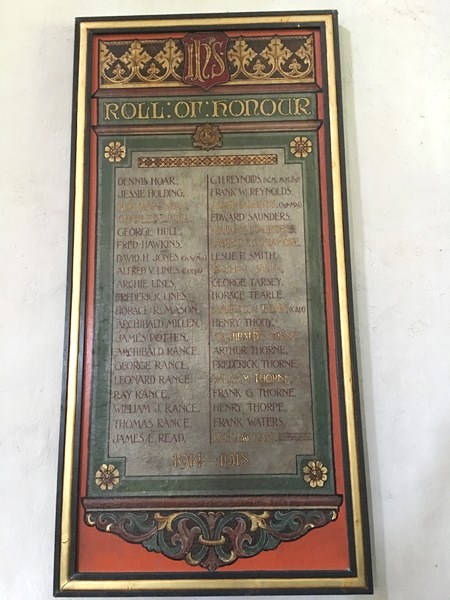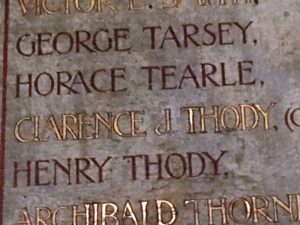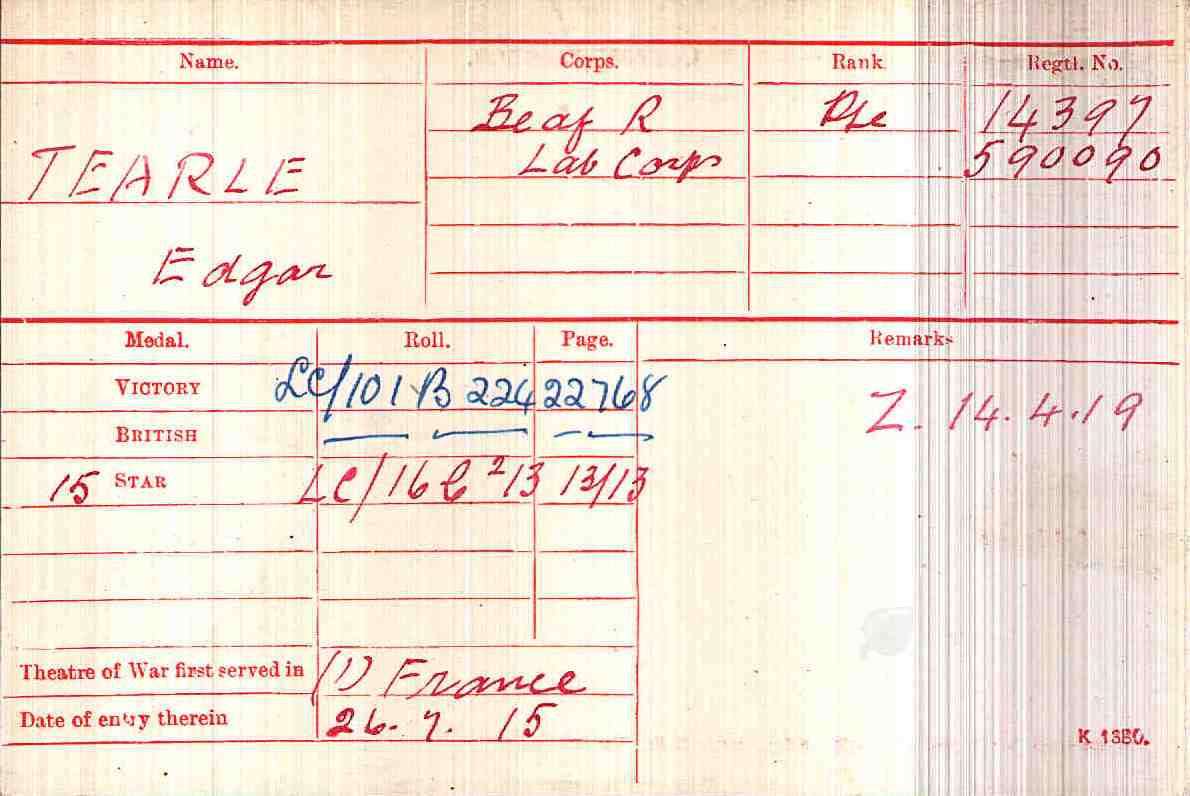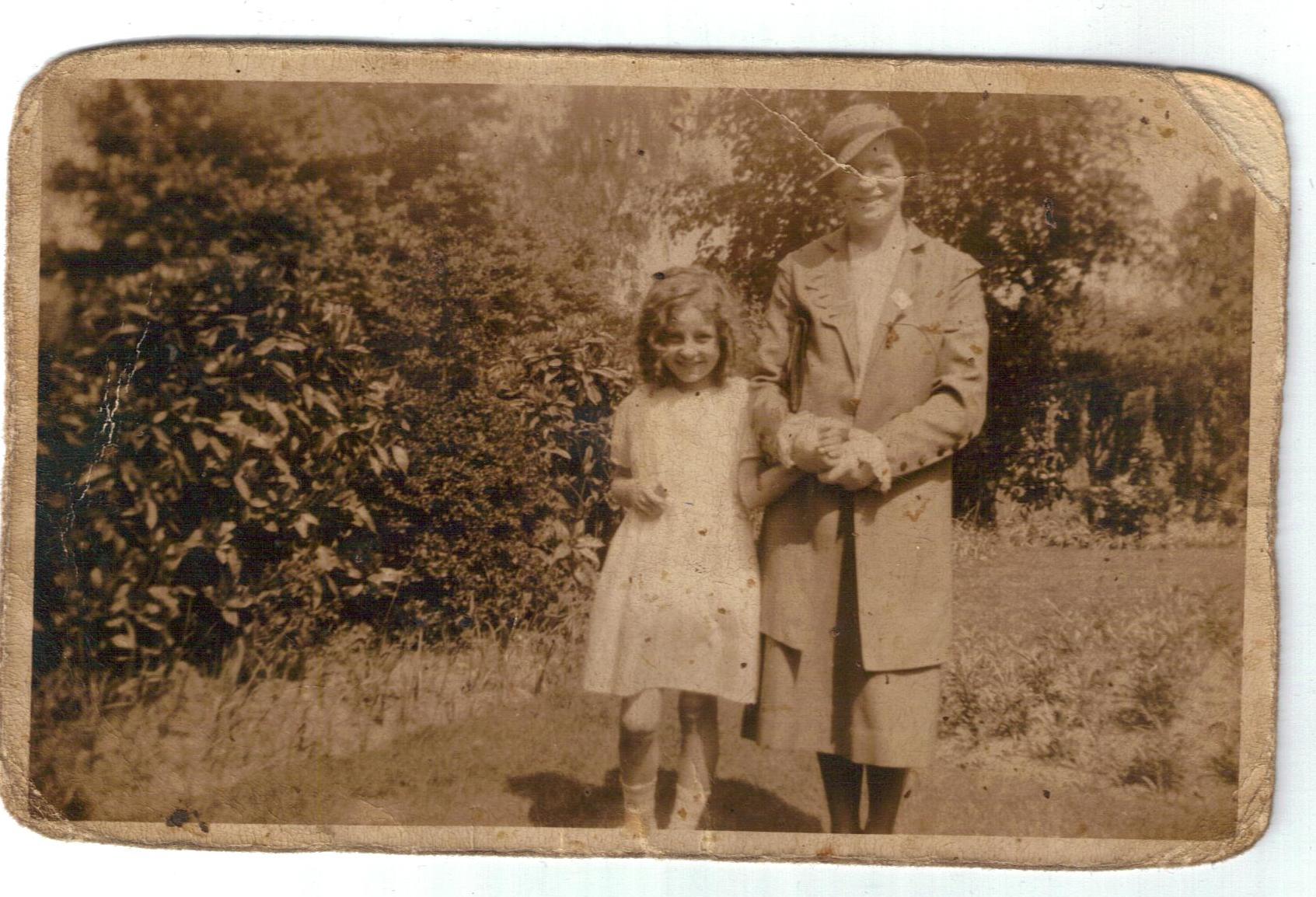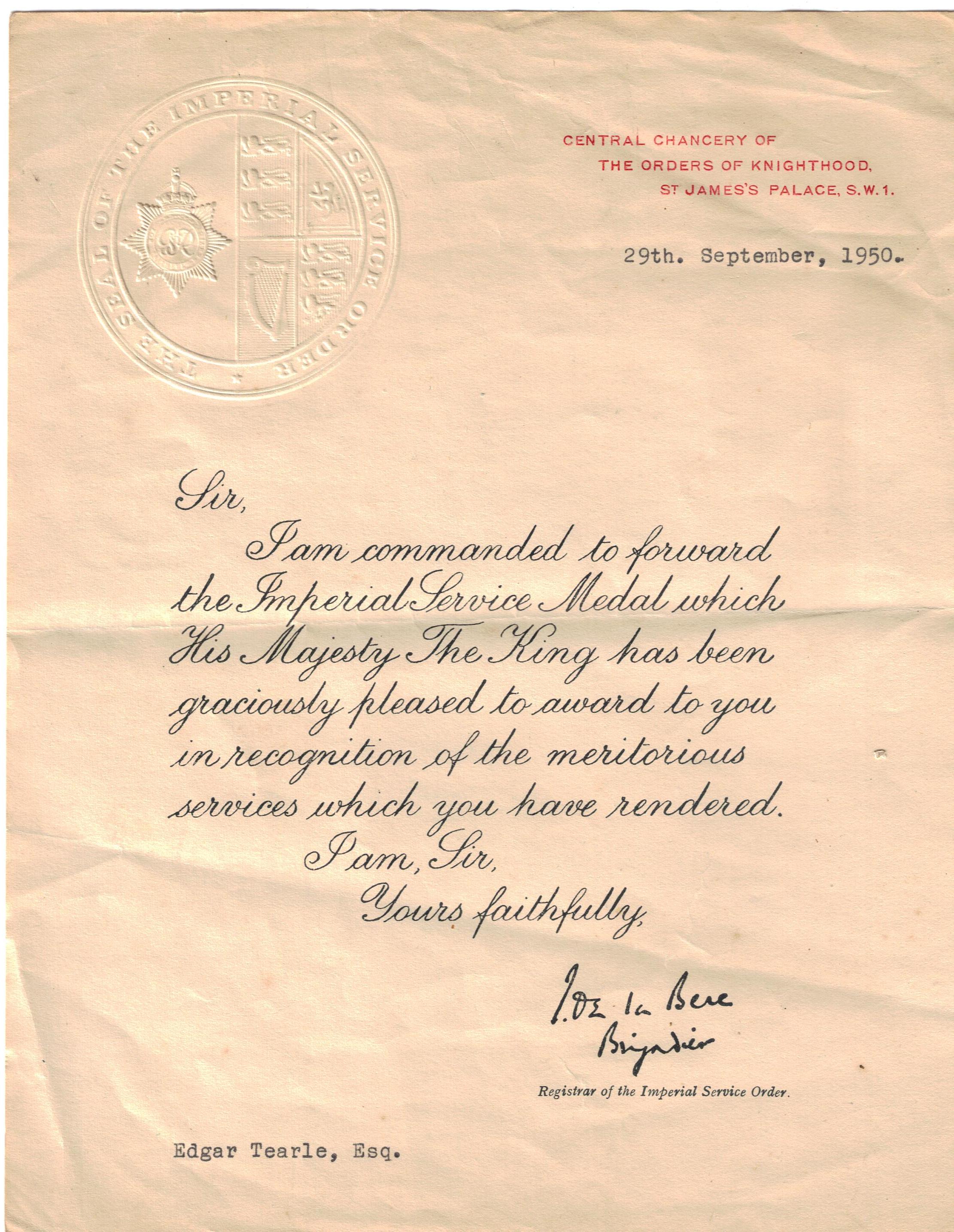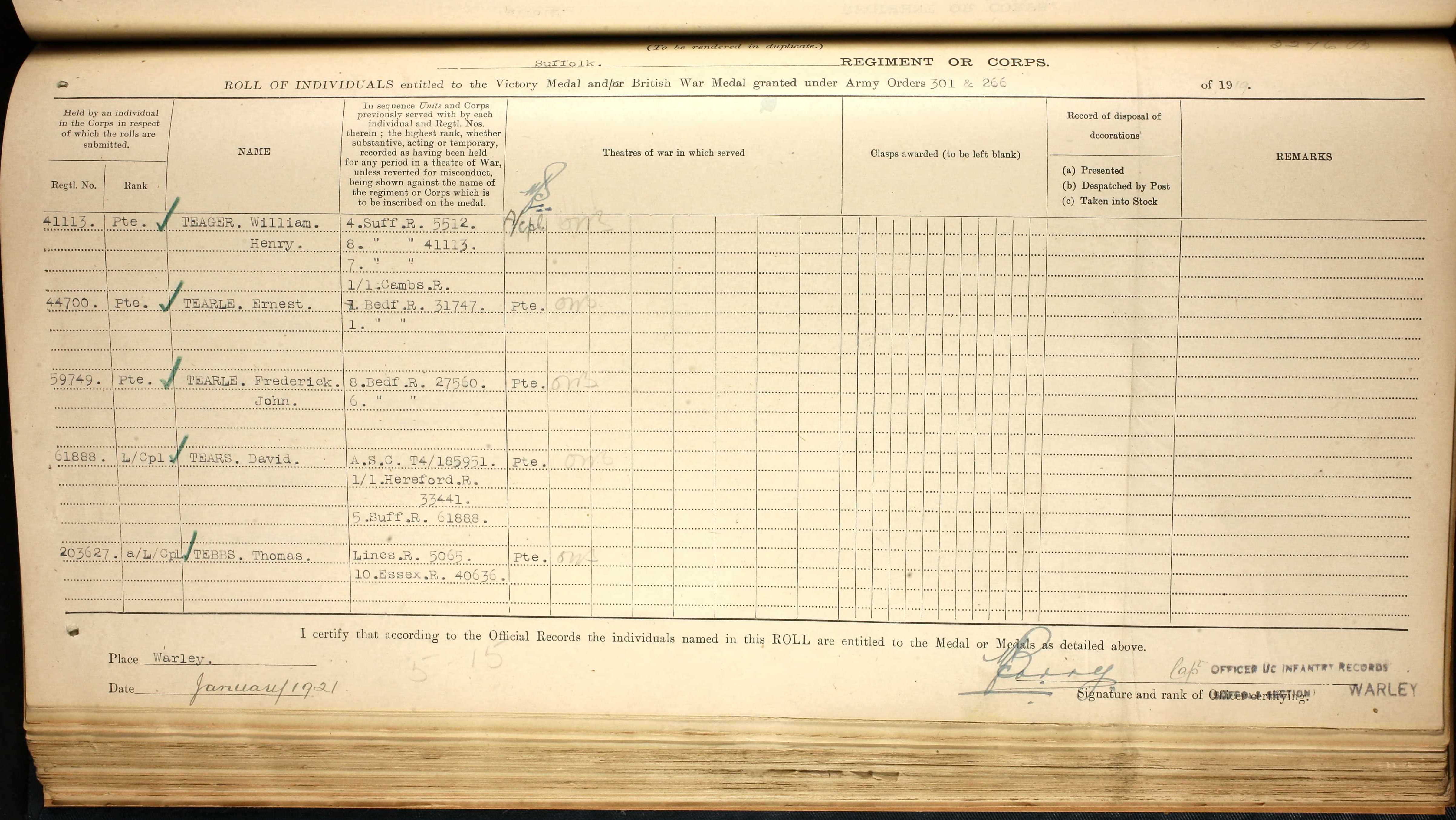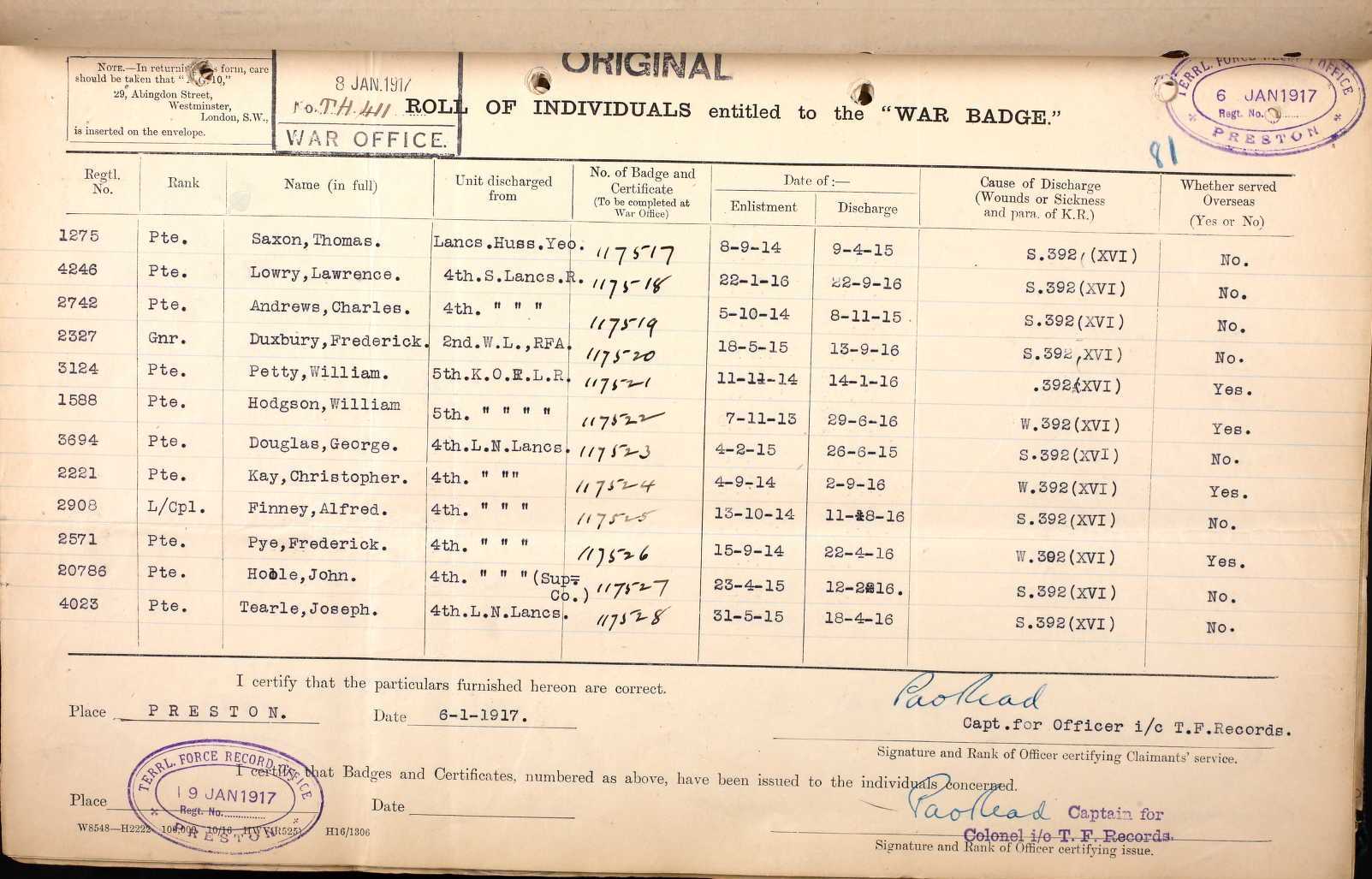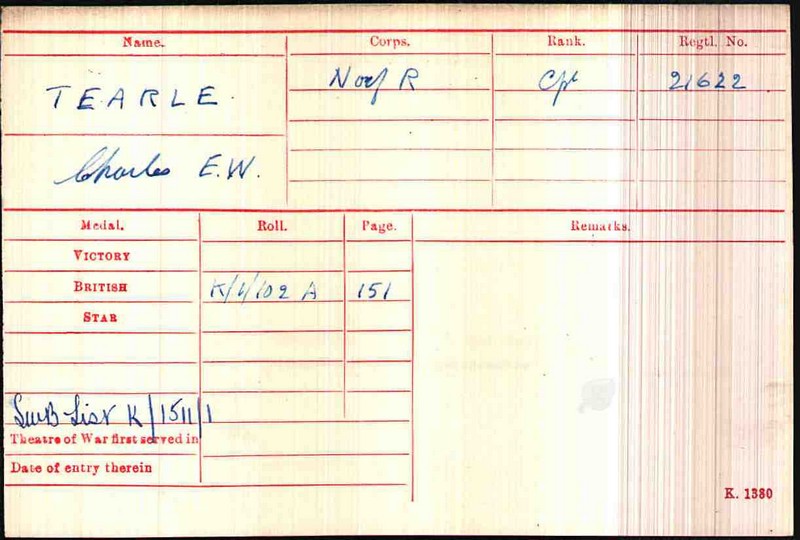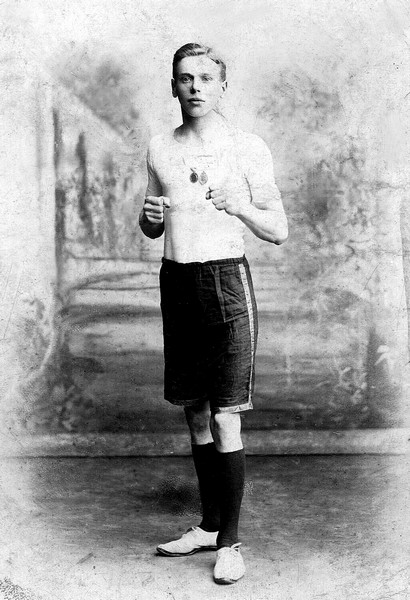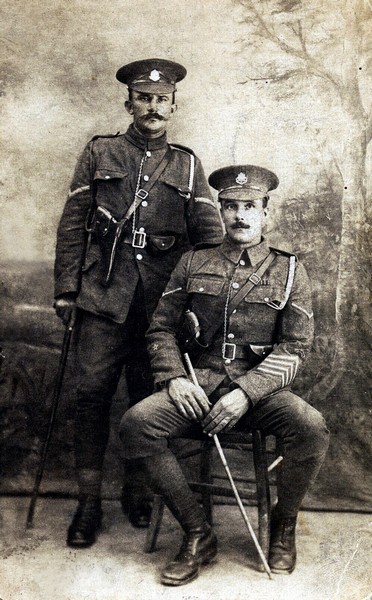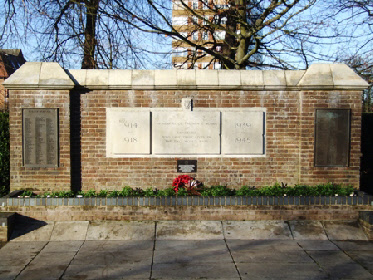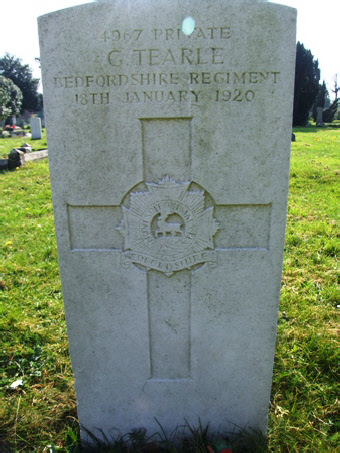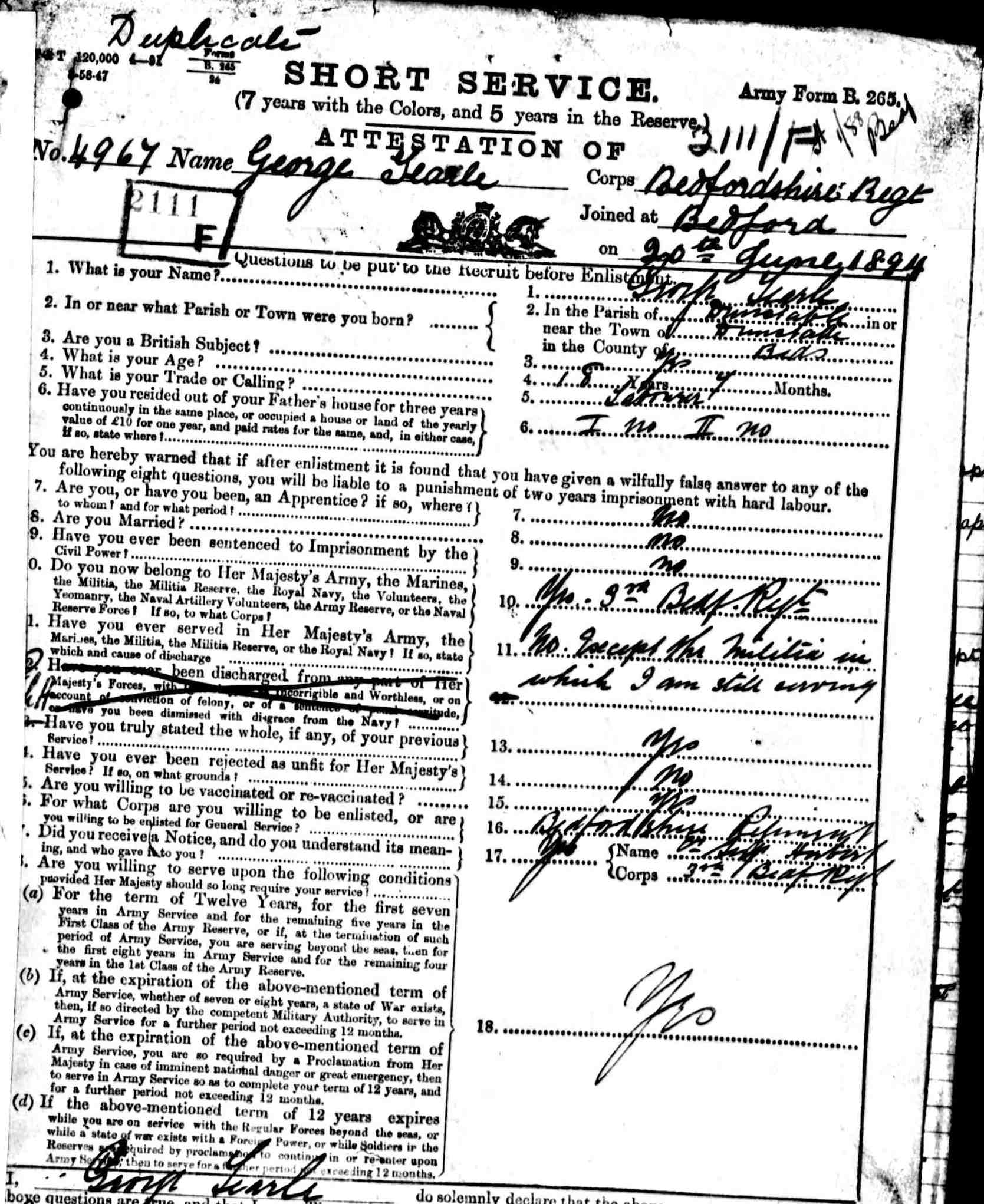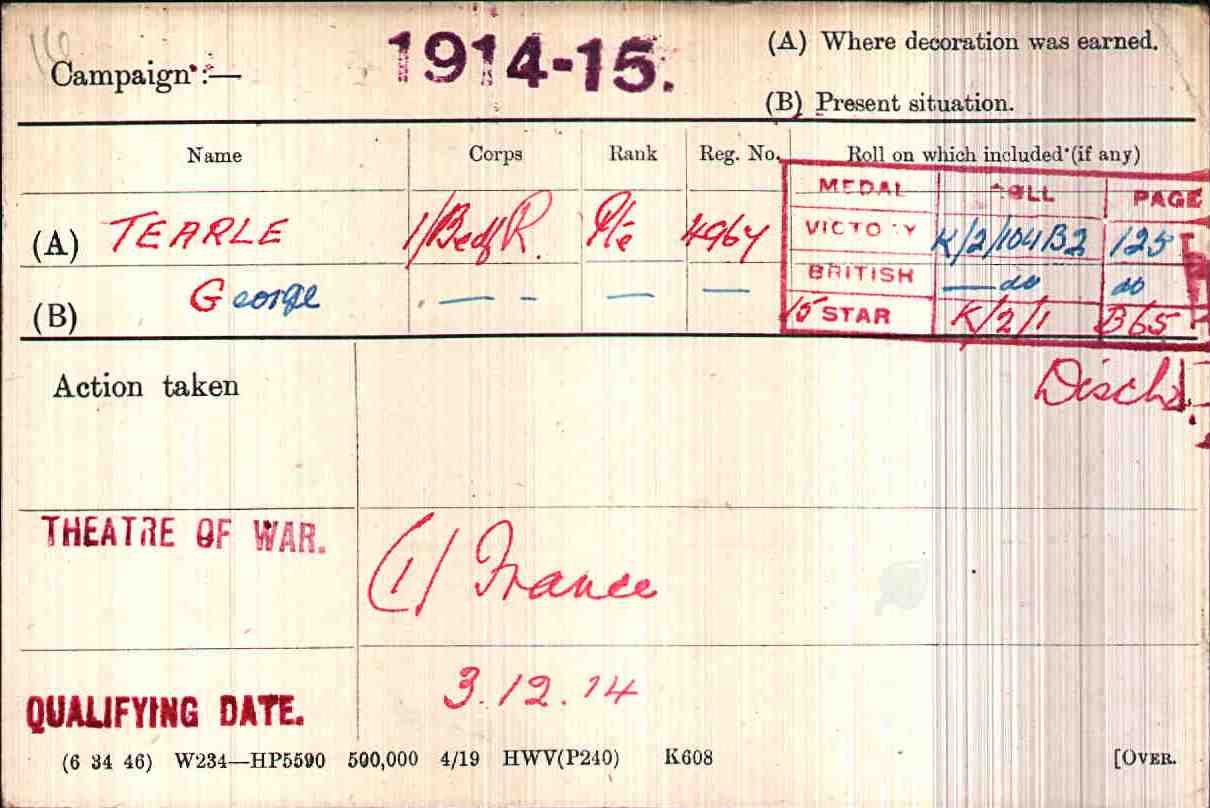National Roll of the Great War said this of Henry Charles:
This man is the brother of Horace 1893 of Edlesborough, and you are welcome to compare the military history of the two men, as well as allow the two posts to share the same story of their family history. In the 1911 census, below, we can see that Henry was already 23 years old, and married. We can also see that the family had some skills: Mary 1889 and Charlotte 1897 are machinists, Horace 1893, Henry Charles and Henry’s wife Elizabeth work in a paper mill, and William Samuel 1894 is working for a blacksmith. Unfortunately, at only 46yrs old, Ellen is already a widow. We saw the marriage of John and Ellen in the story of Horace 1893, but John had died before he turned 40 years old.
Henry had married Elizabeth Winter on 4 June 1910:
In comparison with his parents, whose marriage is pictured on Horace’s post, Henry could read and write, and so could Elizabeth. The Mary Tearle at their wedding was Mary 1889, Henry’s immediately younger sister. The best he could say for his job was “Labourer,” but he had a skilled job in a paper mill, at the heart of the printing industry. Unfortunately, these days there is no Card Finisher, and whatever it meant in 1911, it was given the code 811, which means Paper Manufacture – other. It is entirely likely that Horace, Henry and Elizabeth are all working at the same paper mill.
Henry went to the recruitment centre in Watford 24 May 1916 and signed up. On 9 Apr 1917 he was called up to the 3rd Infantry Works Company. He was 29 years 10 months old. He should have been in peak form. When he turned up at the testing centre in Bedford, they were not too sure. They gave him a Category Cii – a low medical grade – and they transferred him to the 327th Inf Wks Coy, with the regimental number 176875. They also filled out several forms for the purposes of opening records in his name – his wife, his family, his disabilities (none) his physical appearance and so on. He was “Posted” to a duty unit on 24 April 1917. I can find nothing in his record that says he did anything or went anywhere, but that is true of any soldier’s record when he is serving at “Home” that is, anywhere in the UK, including Ireland.
On 15 Feb 1919 he was transferred to the army reserve on Demobilisation. He was free to go home, but could be called up at any time if required. A highly satisfied form, I think, dated 7 Jan 1919 attested that on the matter of discipline “Certified no entry while serving in this Coy.” He had served in the war, and no-one had ever shot at him. He picked up the form from the No1 Dispersal Unit that allowed him to travel home, and noted that he was prohibited to wear army uniform after 28 days from 18 Jan 1919. He was allowed to wear his greatcoat, but if he handed it in at his local Post Office, they would give him £1 for it. He was free of the army, he could go back to his family and hopefully his old job, and he could tell a nice tale of his adventures.







